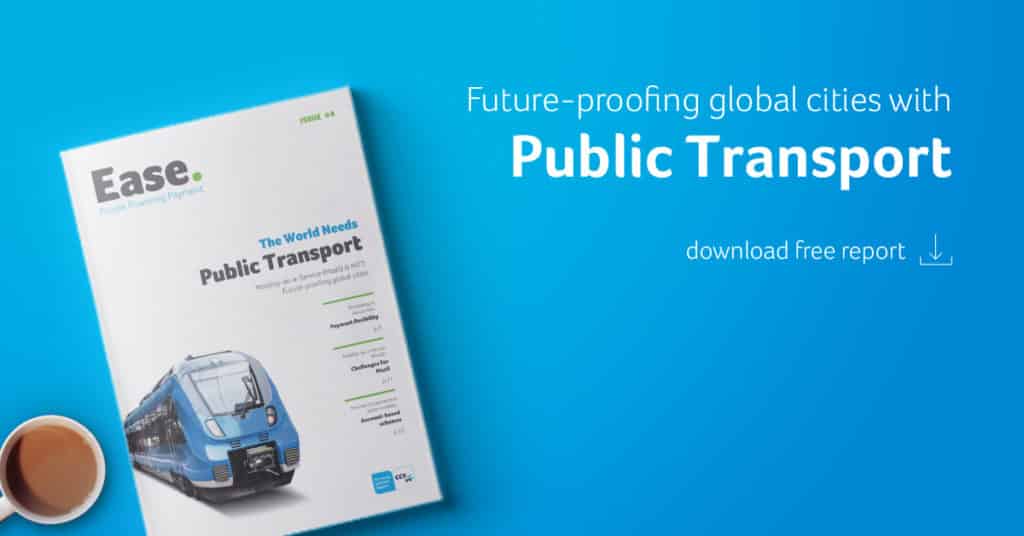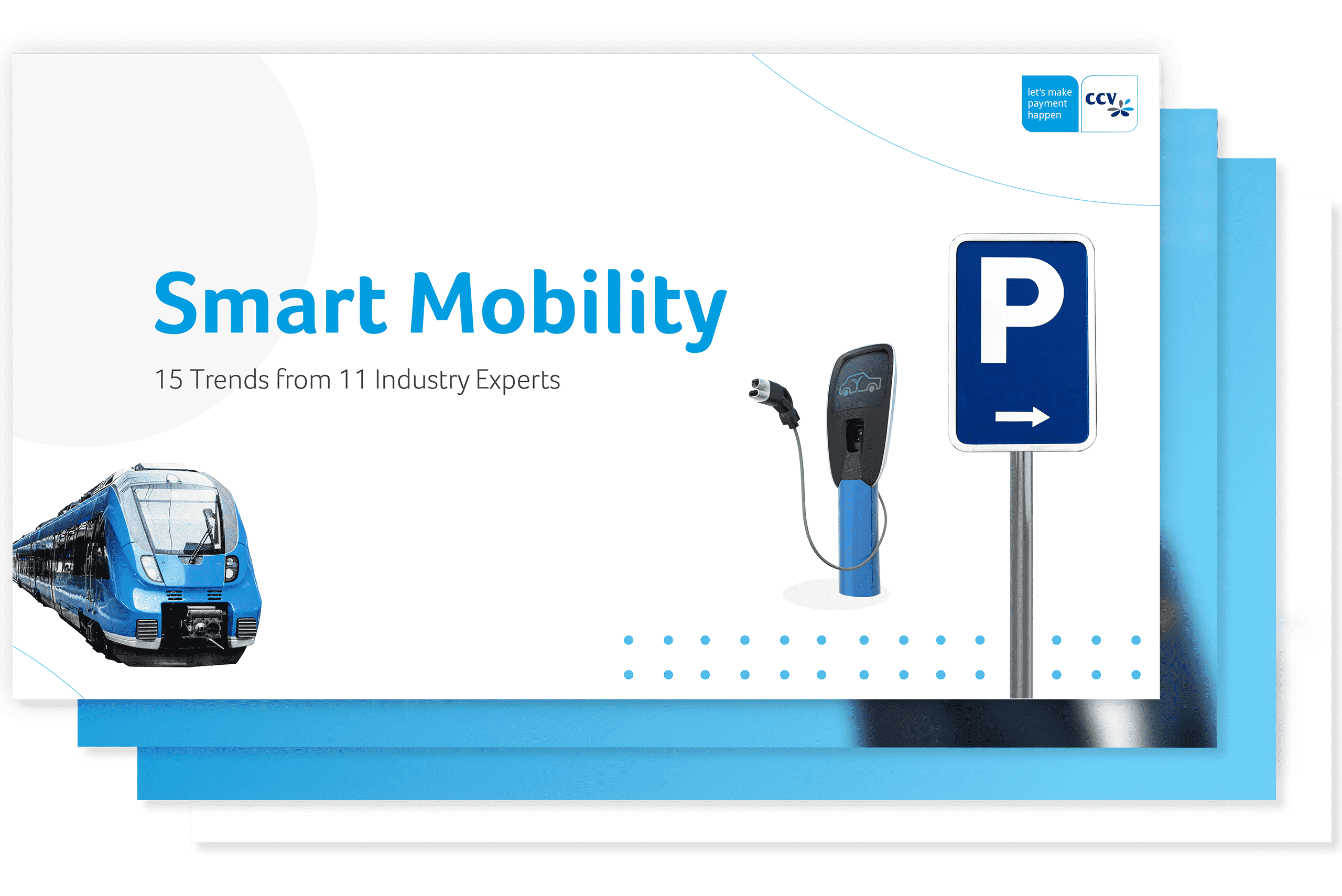Welcome to the second part of our interview with Aida Abdulah, Senior Project Manager within the Knowledge and Innovation Department at UITP – the International Association of Public Transport.

In the first article, Aida talked to us about the future of cleaner and greener public transport in urban areas. She outlined the benefits and challenges of decarbonising our transport networks, and tells us about the best examples from around the world. You can read this first part of the interview here.
In this half of the conversation, we hear from Aida about Mobility-as-a-Service (MaaS) and public transport payments. We’ve talked a lot about these topics on the CCV blog, including in our piece about why customer focus is key for implementing MaaS and in our interview with Giuliano Mingardo. As the world adopts integrated and digitally-powered mobility infrastructure, CCV is here to make payments happen.
The emergence of MaaS
Mobility-as-a-Service is a nuanced term, but the most commonly accepted definition relates to the integration of multiple transport modes into one service: digitally-powered booking, payment, and seamless travel from A to B. Commentators often refer to MaaS as a subscription service for on-demand mobility. It could be argued that the “ultimate” form of MaaS is some way off, but we are certainly moving towards a better-integrated network, likely to combine public and private sector stakeholders.
In her role at UITP, Aida emphasises the case for zero-emission public transport — with a focus on electric and hybrid buses in particular. We were curious to know how she feels about the MaaS idea (and trend), especially with regard to its impact on cleaner and greener public transport.
“In today’s urban mobility, ideas and services pop-up, develop, and sometimes die quicker than the regulation can cope with. In this sense, MaaS — being understood as a smart integration of different services with public transport and active modes at its basis — is definitely a good opportunity to provide sustainable urban mobility that is user-friendly and focused on the user’s travel needs. The integrated planning, booking, and payment of services through a single platform is thus a major advantage to provide tailored mobility and enable life without having to own a car…
In this sense, for me public transport and MaaS shall go hand in hand towards this goal, especially with regards to facilitating the mobility of the elderly. UITP recently launched a Policy Brief and a Report on MaaS which had great success, and I think UITP can lead the discussion about being ready for MaaS.”
We recently published an article about the transition of service stations into mobility hubs, which is arguably a key aspect of making MaaS a success. The seamless integration of different transport modes needs to happen in a single physical location, and this can be a challenge to achieve…
“When talking about MaaS, if done smartly, the integration of private mobility services with public transport and active modes offer great potential to improve urban mobility in a sustainable and meaningful way. This applies of course to mobility hubs, which are an upgraded version of the classical intermodal hubs of the past. To make this a success, having a public transport authority or relevant body overseeing the corresponding strategy and plans becomes key. A holistic strategy involving all necessary public bodies and stakeholders and — with a proper project governance — is essential to ensure that all the necessary aspects are considered in the most efficient and useful way.”
Working together for better transport
The sweeping changes in mobility around the world won’t happen successfully without collaboration. With so many stakeholders in play — holding different motivations and biases — this is a huge challenge, and one that varies in scale between continents, countries, regions, and cities. We asked Aida how she sees the responsibilities for different public and private stakeholders…
“Sustainable and inclusive urban mobility must always be established at the top of the political agenda. Policies will define the framework to create cities for all — shifting from a car-oriented to a people-oriented city, with more space for walking and cycling, and a public transport system able to meet people’s travel needs — supported by MaaS.”
But according to Aida, the pace of change doesn’t always work for everyone.
“Sometimes ideas in the sector come at a pace that policy makers struggle to deal with. A great example of a micro-mobility trend without regulation is the e-scooter, which you can find in many European cities. In order to provide appropriate services, we also need appropriate (and timely) regulation. It was the same about six years ago, when e-car sharing schemes started flourishing. System operators needed to locate parking spots provided with a charging column. At that time, some cities didn’t have a regulatory frame to approve or decline permits for civil works to build charging columns. The same applied for authorising parking spots on public space. This is a common challenge for operators and cities. With the correct advice and regulation, we can get more structure.
Regulation and policies are progressively shifting towards more sustainability, so it won’t be possible for the industry, and those wishing to enter it, to ignore this. Sticking to sustainability as a principle will be the way we move forward. With the bigger mission of tackling the climate emergency in mind, it’s important that all stakeholders are aligned on innovating public transport not just for efficiency and passenger comfort, but for the health of the environment.
“There are already many examples of how the industry can lead by example and contribute to decreasing emissions both through their products (i.e. vehicles) and also through the manufacturing process. Also, we see among UITP members that the bus industry has committed to following the climate action call with an impressive number of clean bus technologies applied in their products — from battery buses to fuel cell electric… but also compressed natural gas (CNG) and biogas.”
But of course, the need for collaboration must materialise in the form of policies and initiatives…
“An example of this commitment from both public and industry stakeholders towards cleaner public transport is the APOLLO-EU Platform, which was launched during the last UITP Summit in Stockholm. APOLLO-EU stands for “Alliance Platform for liveable and low-carbon communities in Europe”, and it is an initiative of the European Commission in the frame of the Clean Bus Deployment Initiative. The APOLLO-EU platform brings together public and industry stakeholders to boost the deployment of clean buses across Europe. This will be a true tipping-point for the fleet upscale of clean bus systems.”
Public Transport Payments
Aida makes the point that investment in technological innovation, digitalisation, and automation must create advances in traditional public transport services such as ticketing, booking, and payments. With this winning combination, the public transport industry can make the lives of travellers much easier.
And how does she see the role of payments in public transport?
“In my dreams it will one day be possible to travel with the same public transport card in any European city, and dreaming big all over the world! If I dream even bigger, I can imagine that services are provided for free against a yearly quote — or as part of the taxes we already pay to support other public services.”
Finally, Aida also sees the potential for new and innovative monetisation techniques…
“Service providers can develop business models that will be able to guarantee and consolidate the revenues, which aren’t necessarily coming from the end users alone — but for instance also from advertising, service partners, and other areas. This is how the early bike sharing systems started being less dependent on public subsidies.”
Thanks to Aida Abdulah for her contribution to this article. You can connect with her on LinkedIn, and read more about her work on the UITP website.
CLICK HERE TO READ OUR FIRST INTERVIEW WITH AIDA
Mobility Trends
We’ve interviewed 9 industry experts, so you can learn more about the biggest mobility trends right now. Download your free slideshow report today
Feel free to share this interview on social media:


